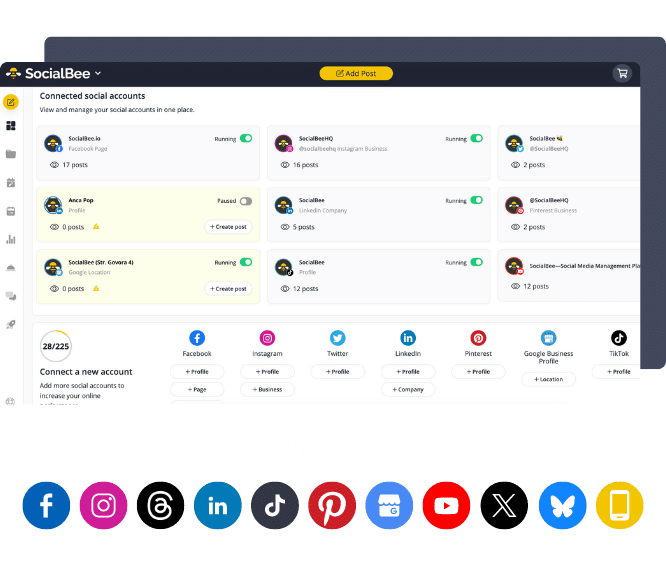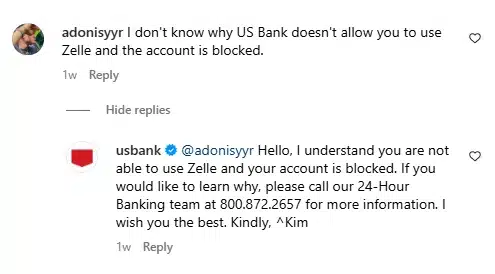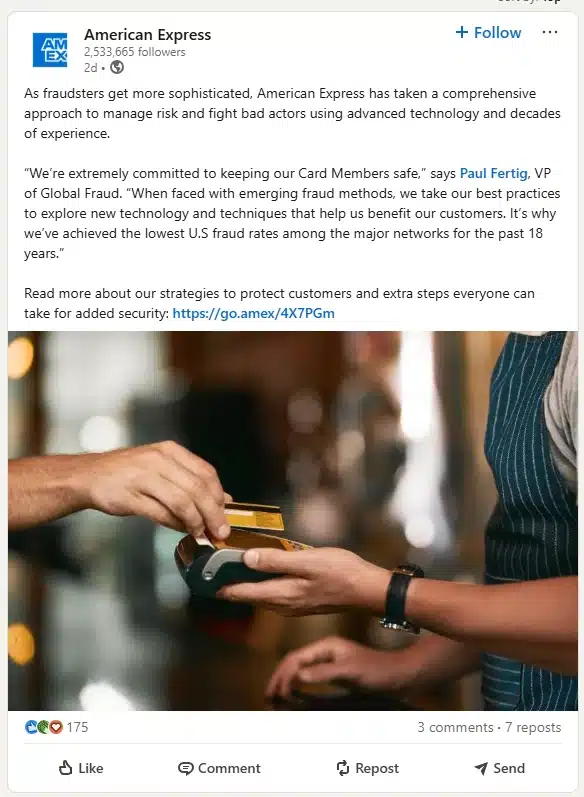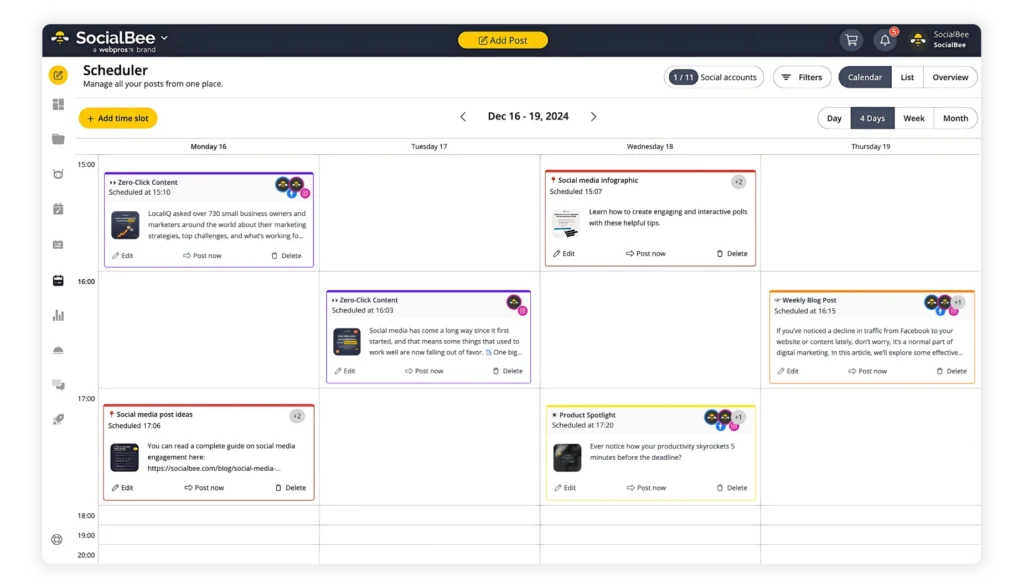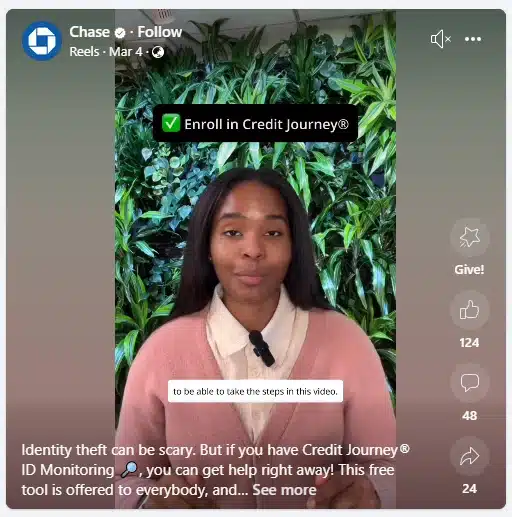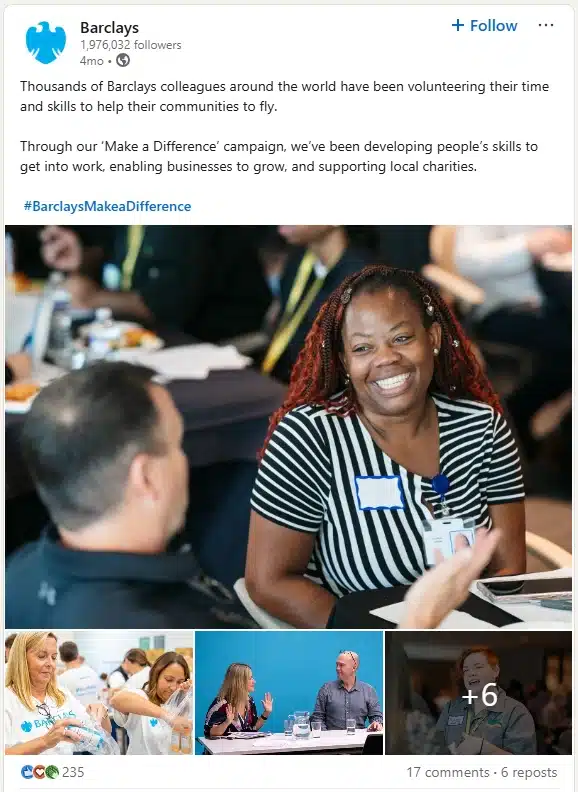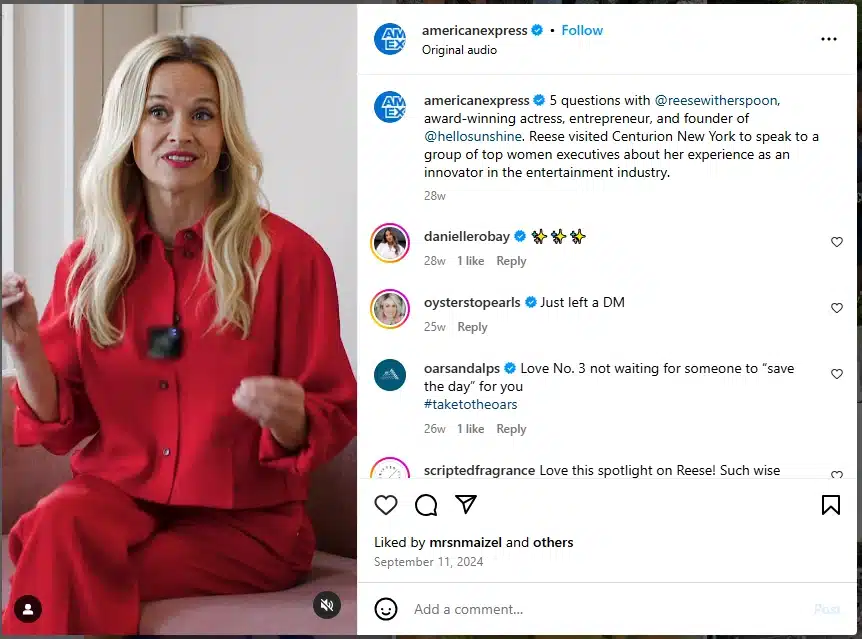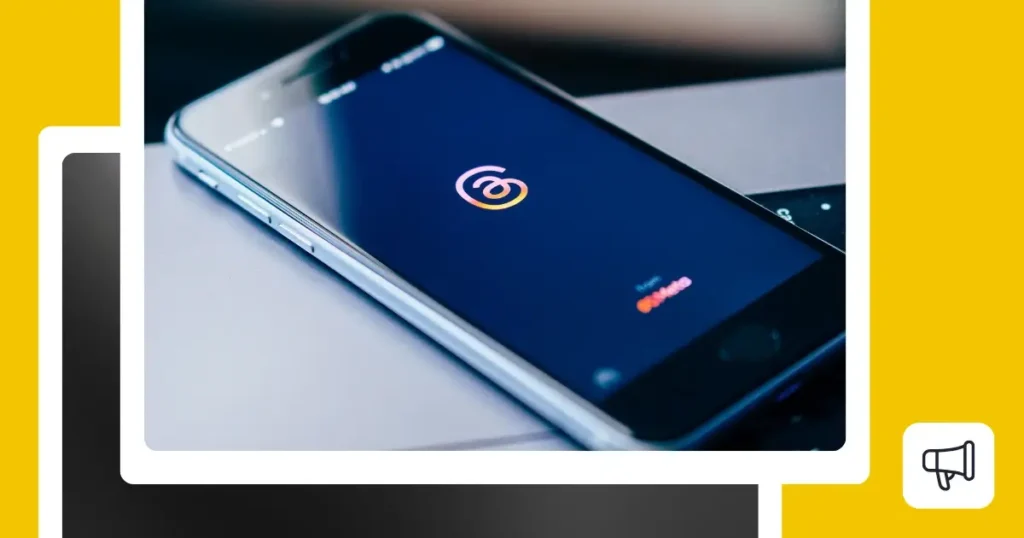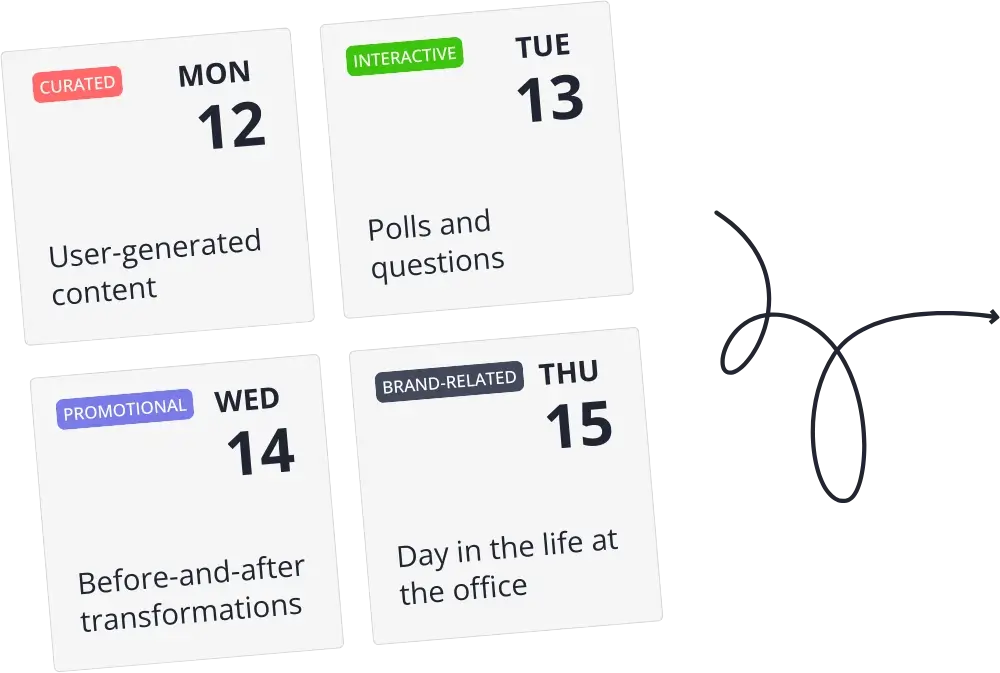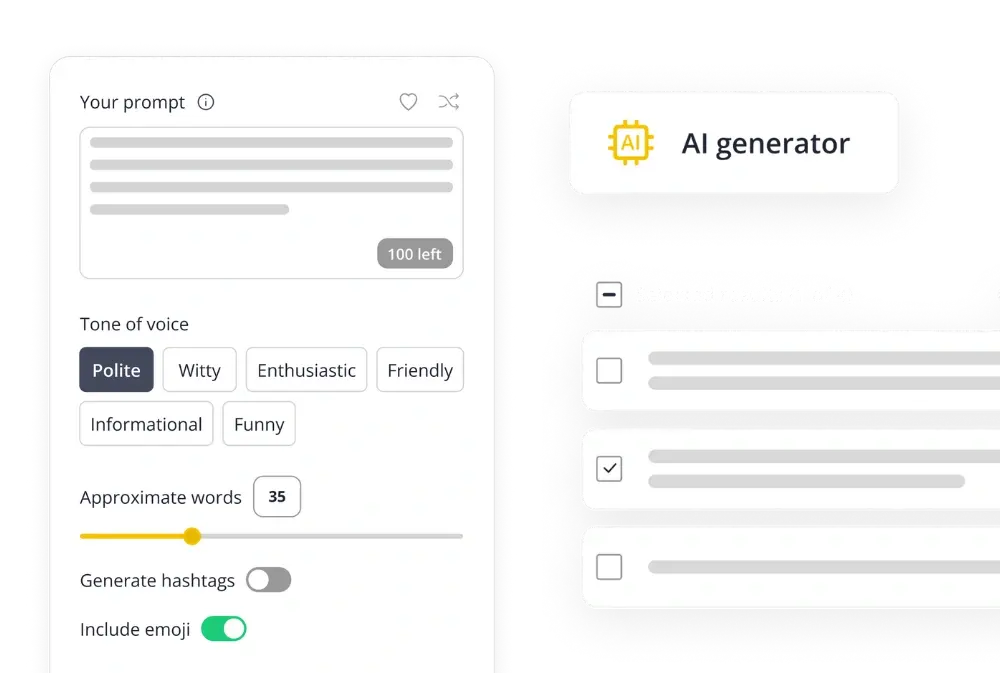
Guest Author
When’s the last time you followed a bank on Instagram… and actually stuck around for the content?
Yeah, it doesn’t happen often. For most people, banking and social media feel like two totally different worlds. But maybe it’s time that changed.
Customers today aren’t just looking for a place to park their money, they want to feel good about who they’re banking with. And that kind of trust is built online.
From answering questions in real time to breaking down confusing money stuff and even showing the people behind the brand, banks have a big chance to turn social media into more than just a digital notice board. It can be a place to connect, build loyalty, and stay relevant, without turning into a walking ad.
This guide breaks down practical, real-world ways banks can level up their social game. Think brand authenticity, stronger customer support and social profiles that actually drive long-term value.
We’re SocialBee LABS SRL, part of WebPros. We use the information you provide to share relevant content and product updates, as outlined in our Privacy Policy. You can opt out anytime.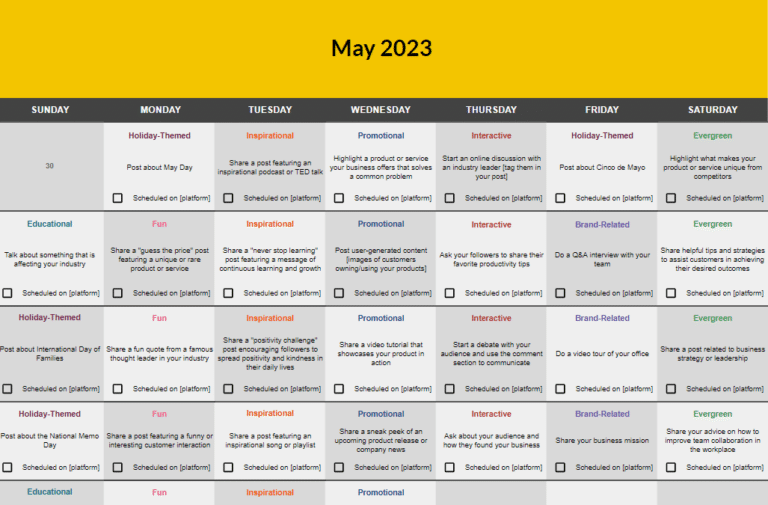
Short Summary
- Social media helps banks earn and keep customer trust by being transparent, offering support, and making financial education more accessible.
- When banks use social to break down security tips, explain money topics, or share useful financial advice, they don’t just sound smart, they actually help people make more informed financial decisions.
- Authentic content works best. Think short videos, real customer stories, and less of the salesy stuff. This approach feels more human and relatably, especially for younger audiences.
- Tools like SocialBee make social media easier to manage. From AI-generated content to automated posting and scheduling, they help save time and make managing multiple accounts more efficient.
- It’s also important to stay in the loop. Monitor what people are saying about your brand so you can catch fraud risks, spot common frustrations, and respond to real needs. Social listening isn’t just smart, it helps shape better strategies that actually land.
Why banks can’t ignore social media today
Banks are all about building strong, long-term relationships with their customers, and social media plays a huge role in that. By using different platforms for different purposes, banks can better connect with people, earn trust, and show they value things like transparency, personalization, and authenticity.
Being active (and real) on social media helps banks come across as reliable, approachable, and secure, especially in a world full of other financial options. Whether it’s keeping customers happy, boosting retention, or building confidence in the brand, social media has a big impact.
The truth is, how a bank handles social (responding quickly, listening to feedback, and sharing content that actually matters) can either help or hurt its reputation. At the end of the day, social media is kind of like currency in banking: it can lead to gains or losses, depending on how well you use it.
Which social media channels work best for banks?
Not all social platforms do the same job, and that’s especially true in banking. Some are better for quick updates or customer service, others for in-depth education or building trust with professionals.
If you’re in finance or marketing, here’s a quick breakdown of what each platform does best. It’ll help you figure out where to focus your efforts based on the type of content you want to share and who you’re trying to reach.
| Platform | Strength | Audience | Best for |
| Thought leadership, C-suite engagement, brand credibility | Professionals, B2B clients | Articles, professional videos, in-depth updates | |
| X (Twitter) | Real-time updates, fast responses, customer service | Busy individuals, info seekers | Short posts, reposts, hashtags, Q&A replies |
| Personal customer engagement, user stories, community feel | General public, families, friends | Mixed media (text, video, images), comments | |
| Eye-catching visuals, brand personality, storytelling | Younger, visual-first users | Short videos, image carousels, stories | |
| YouTube | In-depth education, product walk-throughs | All ages, casual browsers | Long-form videos, how-tos, tutorials |
Banks should choose platforms that align with their social media marketing goals: whether that’s customer support, thought leadership, or educational content.
And remember: great results come from tailoring content to each platform. Whether you’re posting a tutorial on YouTube, a customer win on LinkedIn, or a scam alert on X, match the message to the medium and the people using it.
9 best social media strategies for banks
From quick replies that feel human to content that actually helps people make smarter money moves, the right social media strategy can turn a basic profile into a real asset.
Here are 9 ways your bank can boost their social media presence and create genuine customer connections:
- Provide excellent customer support through quick responses
- Educate customers on financial security
- Showcase transparency to build trust
- Use social media management tools for consistency
- Use video content for greater engagement
- Encourage user-generated content (UGC) and reviews
- Run contests and interactive campaigns
- Collaborate with financial influencers and experts
- Use social listening to improve customer support and services
1. Provide excellent customer support through quick responses
People expect fast replies nowadays, especially when it comes to their money. Most customers want help within an hour of reaching out. Meeting that expectation isn’t just about solving their issue, it shows them you care and builds long-term trust.
Here are a few easy ways banks can use social media to offer great customer service:
- Use AI chatbots to instantly answer common questions: Tools like these can help with everyday stuff like “How to lock your credit” or “What’s today’s interest rate?”—freeing up human agents for more complex issues and giving customers quick, helpful answers.
- Offer customer support across different time zones: Issues don’t wait for office hours. Whether it’s a fraud alert on a Sunday or a blocked card after hours, having teams available around the clock (or in shifts) means you can resolve things faster. While quick help via private messages on social media can be useful for simple questions or requests, more serious issues should always be handled through approved, secure channels to protect customer privacy and security.
Using a strong knowledge base software also helps streamline everything. With consistent, pre-approved answers available to both customers and agents, support becomes faster, easier, and more accurate across platforms.
Speed really matters in banking. Fast help = happy, loyal customers. And happy, loyal customers? That’s your competitive edge.
Just look at how some banks already respond to social media inquiries in under 20 minutes. That kind of speed shows they’re listening, and ready to help with anything from suspicious transactions to lost debit cards.
2. Educate customers on financial security
Let’s face it: most people aren’t totally confident when it comes to online security and financial scams. And with new cyber threats popping up constantly, banks have a real opportunity to step in and help. By becoming trusted guides in this space, banks can build stronger relationships with customers and help them feel more in control.
Sharing tips, simple advice, and regular updates builds trust. When existing and potential customers feel supported and informed, they’re more likely to stick with the bank that made them feel safe.
Here’s how your bank or credit union can make financial education work on social media:
- Post short, “explainer” videos regularly. These can cover basics like spotting phishing emails, staying safe on public WiFi, or even recommending tools like Aura for extra protection.
- Create easy-to-digest graphics Compare good vs. risky banking habits: like using strong passwords or setting up alerts. Share these tips on Instagram, LinkedIn, or wherever your target audience scrolls.
When banks take the lead on financial safety, they cut down on fraud cases and support tickets. But more than that, they show customers they care about more than transactions.
3. Showcase transparency to build trust
Over 80% of people say transparency plays a big role in their loyalty to a brand. And let’s be real, if your bank is keeping secrets, it’s not doing much to inspire confidence.
That’s why it’s worth sharing more than just the wins. Talk openly about your processes, how decisions are made, or what goes into launching a new feature. Whether it’s service delays, fee updates, or product changes, being honest builds credibility.
This kind of communication feels more human and relatable, especially in a space where trust matters most.
If you want to build more trust on your bank’s social accounts:
- Post openly about how you respond to security incidents. Give clear steps customers can take, like enabling alerts or checking recent transactions, and explain what your team is doing to help.
- Highlight certifications, industry awards, or endorsements. It’s not bragging, it’s reassuring. People want to know their bank meets high standards and gets recognized for it.
Transparency turns crises into connection points. When customers see that you’re honest and proactive, even tough news becomes a trust-building moment.
And banks that embrace this mindset often find their customers aren’t just more loyal, they’re more forgiving and vocal advocates when things do go wrong.
4. Use social media management tools for consistency
Posting consistently, around three to five times a week, makes a big difference. Banks that show up regularly on social see way more community engagement than those that post sporadically.
That’s where social media tools come in handy. They help you plan ahead, keep your content on-brand, and make sure you’re showing up with the kind of reliability customers expect from a financial institution.
Want to take it a step further? Try adding structure with themed content and smart tracking:
- Set up easy themes like “Financial Tip Thursday” to keep things consistent.
- Use scheduled posts to share practical advice like “How to spot a fake check” or “The safest way to share your account info.”
Then, check your analytics. See what content gets the most likes, clicks, or shares, and do more of that. Patterns = insight, and insight = better engagement without the guesswork.
If your bank’s marketing team is juggling social media content, customer updates, and posting across different channels, SocialBee can help keep things running smoothly.
While AI tools can speed up post creation, SocialBee makes it easy to plan, schedule, and tailor posts for each platform, all from one place. You can quickly fill your content calendar with engaging updates, while still leaving sensitive or compliance-heavy topics to your in-house experts. The result: consistent posting, stronger engagement, and less day-to-day stress for your team.
With SocialBee, you can set your posting schedule, keep your tone consistent, and manage multiple platforms from one place. That way, your team stays organized and on track, without adding extra stress.
5. Use video content for greater engagement
Video outperforms almost every other format on social media. And it’s not even close. People are far more likely to interact with a short video than a wall of text or a still image.
Short, scroll-stopping clips are perfect for shrinking attention spans. And for banks, they’re a great way to explain things clearly, build trust, and keep users coming back.
To make video work for your bank:
- Start a weekly Reel or short video series. Try something like “60-Second Banking” to break down complex topics, show off app features, or give quick financial tips. It’s bite-sized education, without the fluff.
- Create tutorials for common app tasks. Videos showing how to freeze a card, set up 2FA, or report fraud can be silent-captioned for Instagram or posted as helpful how-to’s on YouTube.
Banks are leaning hard into short-form video to connect with younger audiences. And it’s working. The content doesn’t need to be fancy, just real, helpful, and maybe a little creative.
Think: quick skits, behind-the-scenes peeks, myth-busting, or even lighthearted takes on finance. When it hits the right note, it’s more likely to get shared and remembered.
Even when a video doesn’t go viral, it still builds trust and visibility, especially with Gen Z. It helps banks feel more human, more relatable, and way less intimidating.
6. Encourage user-generated content (UGC) and reviews
Let’s be honest: people trust people. Studies show that consumers are way more likely to trust what another customer says over anything a brand puts out. That’s why user-generated content (UGC) is such a big win for banks.
When real customers share their stories, reviews, or even rants, it builds trust. It also makes your brand feel more relatable and human, which is rare (and refreshing) in the finance world.
Here’s a great example from American Express showing how to do it right:
Want to bring this kind of magic into your own content calendar? Try this:
Use branded hashtags like #5StarBankStory. Create a unique hashtag for your bank so customers can share their financial tips, positive experiences, or success stories. When people use it, it becomes easy for your team to find and highlight user-generated content, whether in emails, on social media, or even inside physical branches
Respond to reviews, good or bad. Shows you’re listening, builds trust, and turns feedback into stronger customer relationships.
User-generated content doesn’t just build trust, it proves you’re paying attention. And when customers feel seen and heard, they’re more likely to stick around and recommend you to others.
7. Run contests and interactive campaigns
People love a good game. That’s why contests and interactive campaigns do so well on social media. They’re fun, they boost engagement, and they actually help people remember what they’ve learned.
Contests aren’t just about prizes, they’re a clever way to spread awareness, share financial tips, and build a sense of community. A smart Instagram budgeting challenge, for example, can get people to share their best savings accounts hacks while also growing your following.
Here are a few ideas your bank can try:
- Host a “Savings Contest” or “Charity Challenge”. Encourage people to join in by sharing their saving accounts tips or pledging donations. Use quick videos or stories to explain how it works and get people excited.
- Run polls on LinkedIn or Facebook. Let your audience vote on content topics, product features, or challenges. It’s a simple way to get insights and show that you value their voice.
These kinds of campaigns can collect thousands of entries while deepening the emotional connections between your bank and your audience. When people feel like they’re part of something, they’re more likely to stay engaged, and even become loyal brand advocates.
8. Collaborate with financial influencers and experts
Influencer content can deliver up to 500% higher ROI than traditional advertising. And for banks, that kind of return is gold. Partnering with trusted voices helps you reach niche audiences in a way that feels personal, not promotional.
When banks team up with financial influencers, they boost visibility, build credibility, and increase customer satisfaction by offering helpful content people actually want to engage with.
Here’s how to make influencer partnerships part of your social media efforts:
- Host Reddit “Ask Me Anything” sessions. Bring in finance experts to chat about retirement, budgeting, or credit strategies. Then promote the best insights across Instagram, LinkedIn, and beyond.
- Work with micro-influencers (10k+ followers). Focus on creators who talk about personal finance or banking. Give them early access to app features or tools like credit monitoring, and let them show your brand in action.
Keep it authentic.
Whether it’s an internal expert sharing app tips or a micro-influencer walking through features on YouTube or Reels, natural storytelling always performs best.
These partnerships not only boost trust but also help drive real results: more app downloads, new accounts, and better reviews. When your broad audience sees real people using your tools and services, they’re more likely to engage, convert, and stick around.
9. Use social listening to improve customer support and services
Nearly half of all customers (about 50%, according to market studies) share their complaints or concerns on social media before going anywhere else. That means your bank needs to be listening – closely.
Social listening isn’t just about needing to monitor brand mentions. It’s about spotting patterns, identifying recurring issues, and acting on them quickly to improve your customer experience.
Here’s how to make the most of it:
- Spot common complaints like login issues, app crashes, or slow service. Social listening tools help you notice these early, so your support team can step in fast.
- Identify keywords that signal dissatisfaction, think “fees,” “support,” or “wait time.” Addressing these quickly shows customers you care and helps turn a bad experience around.
By staying tapped into what customers are saying, you can boost support performance, improve your messaging, and sharpen your overall sales strategy.
Think of it as having your finger on the pulse of your online reputation and acting on it productively.
Key challenges banks face on social media
1. Handling compliance and regulatory restrictions
When banks talk to customers on social media, they need to be extra careful. There’s a web of strict rules to follow: how they talk about their services, what info they can use, and how they handle sensitive data.
Compliance guidelines from groups like the SEC and FINRA cover everything from communication style to data usage. It’s a lot, but it’s also non-negotiable. So yes, it’s important to also involve compliance teams in social media.
Following these rules keeps banks out of legal trouble and builds credibility. With solid social media policies in place, banks can stay compliant while still showing up and engaging with their audience.
2. Dealing with security risks and online fraud
Social media is a playground for scammers: phishing, fake accounts, shady DMs, you name it. That’s why banks need strong identity protection, constant monitoring, and quick reactions to data breach alerts.
When trust is already fragile, even one viral scandal or data leak can shake things up. Customers want to feel safe. So, banks need to prove they’re listening, watching, and ready to act fast.
Frequently asked questions
Educate users with social media content that grabs their attention in videos, reels, and stories. Offer resources for assessing their knowledge through quizzes, and watch for emerging threats through social listening.
Banks tend to serve a similar audience across platforms, so choosing where to post depends more on content type than on demographics.
Here’s how each platform can work for you:
- Facebook: Great for community building and quick support updates.
- LinkedIn: Perfect for B2B content, industry insights, and leadership messaging.
- Instagram: Good for sharing customer stories, behind-the-scenes moments, and educational reels.
- YouTube: Ideal for tutorials, explainer videos, and breaking down complex topics.
- TikTok: Best for short, creative takes on money tips, trends, and FAQs.
It all comes down to planning ahead and using the right tools. Creating a content calendar each quarter, and scheduling posts with tools like SocialBee, makes it way easier to stay consistent (think 3–5 posts a week) without scrambling last minute. It also gives you room to spotlight top-performing posts and push them further when they’re working.
With smart scheduling, social listening, and analytics, banks can also set up clear content categories that are already compliance-approved. That means faster sign-offs, less back-and-forth, and smoother teamwork across departments.
Strengthen customer loyalty in the financial sector through social media
Banks that show up as guides and supporters in their customers’ financial journeys help people feel more secure and satisfied. And what do they get in return? Loyalty and trust – two things money can’t buy.
By combining educational content with real stories and clear updates, banks can make their social media presence more than just a polished brand front. These small, human touches boost retention, improve financial literacy, and make banks feel less corporate and more caring.
Running a solid content strategy doesn’t have to be complicated. When you plan ahead and automate your social posts, you’re saving time and staying consistent across every platform.
💡 Start your 14-day free trial with SocialBee and explore how easy it can be to track performance, automate posting, and share content that actually connects.
